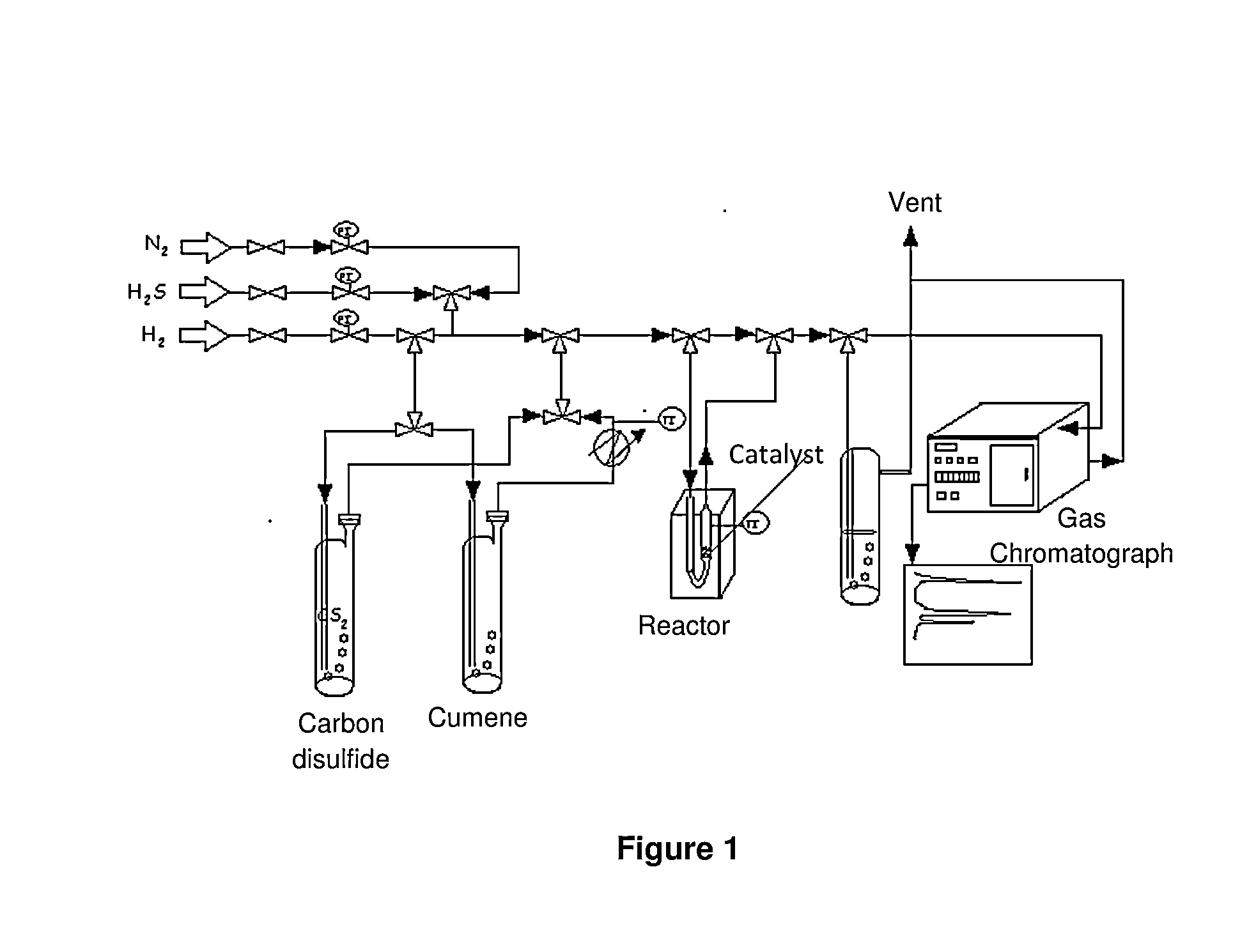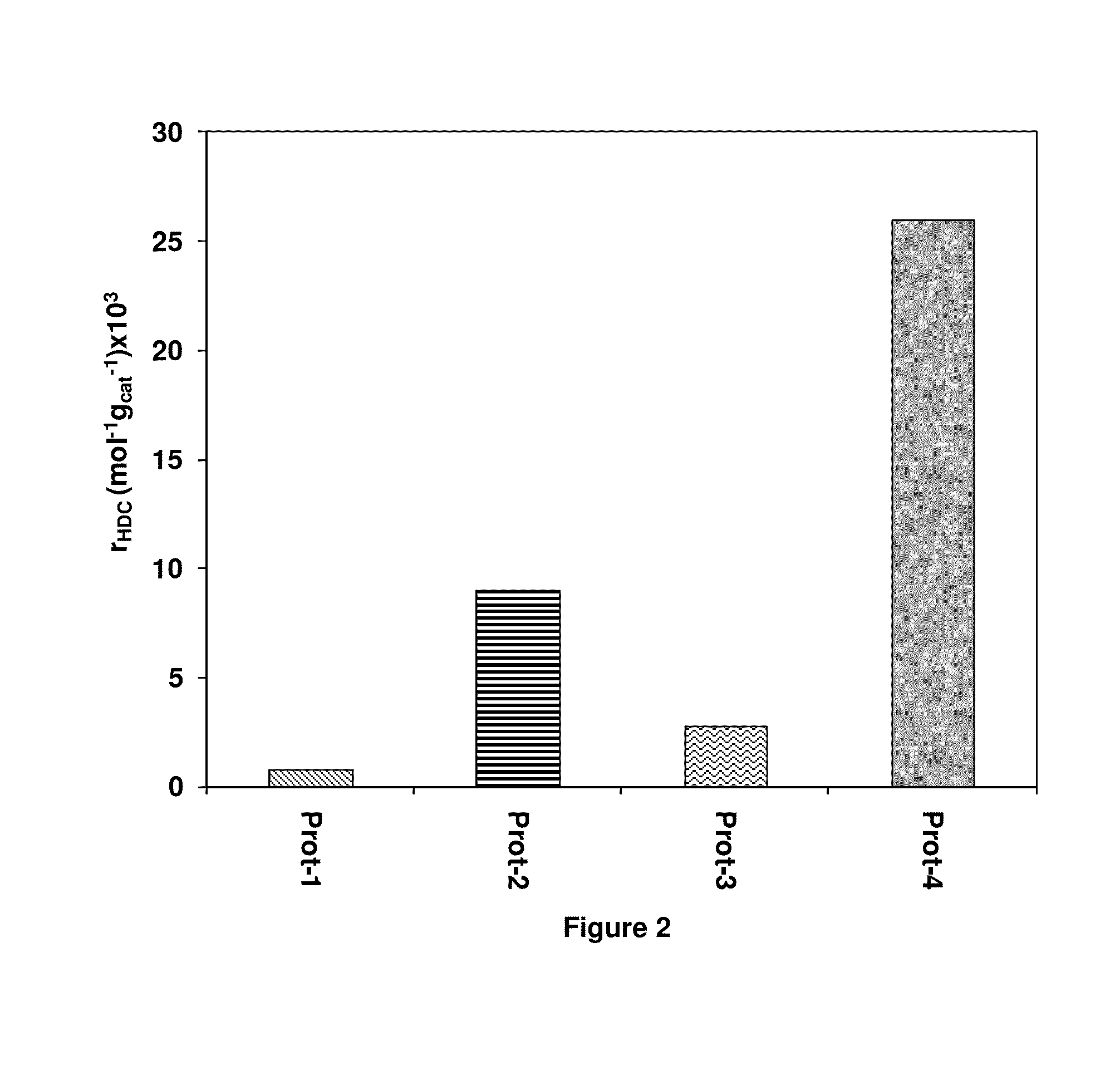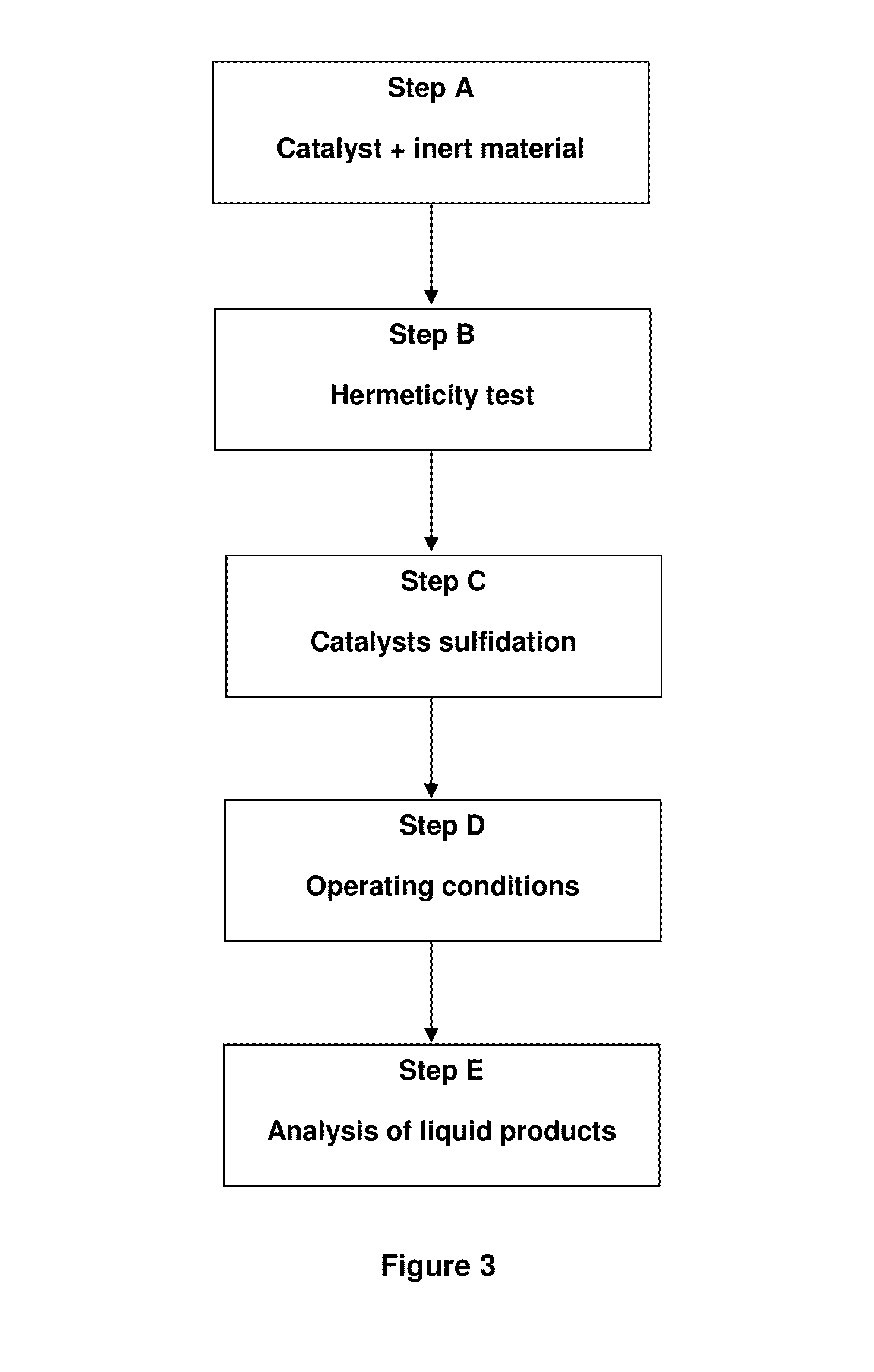Mesoporous composite of molecular sieves for hydrocracking of heavy crude oils and residues
a technology of molecular sieves and composites, which is applied in the direction of molecular sieve catalysts, catalyst activation/preparation, metal/metal-oxide/metal-hydroxide catalysts, etc., can solve the problems of increasing the difficulty of hydrocracking affecting the hydrocracking efficiency of heavy crude oil and residues, etc., to achieve the minimum d
- Summary
- Abstract
- Description
- Claims
- Application Information
AI Technical Summary
Benefits of technology
Problems solved by technology
Method used
Image
Examples
example 1
[0090]In the preparation of the supports for the prototype of this Example 1 was used commercial boehmite, tetraethyl orthosilicate (TEOS) from Aldrich, and mesoporous material (SBA-15) synthesized in the laboratory.
[0091]For the preparation of the supports of the present example we used boehmite as binder.
[0092]For the synthesis of support for prototype 1 (Prot-1), boehmite was used as starting material wherein to a portion of the total boehmite (10%) used as a binder was added the required amount of nitric acid (HNO3) at 10 wt % to peptize it, then gradually the rest of the boehmite (90 wt %) and deionized water were added, until achieving a homogeneous paste with the right consistency to extrude and get extrudates of 1 / 10 inch in diameter. The extrudates were aged from 12 to 18 h, dried at 100-120° C. for 2-6 h, and subsequently calcined using a temperature ramp of 2° C. / minute up to 500-550° C., maintaining the last temperature for 4 hours to obtain an alumina support in its gam...
example 2
[0111]In this example the same commercial boehmite Catapal C-1 and SBA-15 considered in Example 1 were used, besides zeolite Y (CBV-720) of the Zeolyst brand.
[0112]For the synthesis of support of prototype Prot-5, SBA-15, synthesized previously in Example 1, was modified with a solution of aluminum nitrate by the incipient wetness method, to obtain a support with 20 wt % of Al. This solid mixture was peptized with nitric acid at 10 vol % concentration, then was extruded to obtain extrudates of 1 / 16 inch (1.59 mm) size, dried at room temperature (±20° C.) during 12, afterwards was put into an oven at 120° C. during 3 h, and finally calcined at 550° C. during 4 h (2° C. / min).
[0113]For the synthesis of support of prototype Prot-6, a support with Al2O3-SBA-15-zeolite ratio of (70-20-10 wt %, respectively) was prepared by a mechanically mixing a mixture of commercial boehmite (Catapal C-1), SBA-15, and zeolite. This solid mixture was peptized with nitric acid of 10 vol % concentration, t...
example 3
[0123]The activity of the catalysts of the present invention was also evaluated in a pilot plant. FIG. 15 presents a flow chart that illustrates the pilot plant.
[0124]The catalytic evaluation of this example was carried out in a pilot plant scale with prototype Prot-6 (71.86 g). The synthesis of this catalytic prototype is described in the Example 2 of the present invention. The uploading of this prototype to the reactor was performed as follows: 100 mL of Prot-6 with 50 mL of inert material (silicon carbide SiC, 30 mesh), 5 beds each one containing 10 mL of inert and 20 mL of Prot-6 were placed in the reactor. The operating temperatures were 360, 370, and 380° C. each one was maintained for 144 hours, the time-on-stream was 432 h. Heavy crude oil was used as feedstock. The operating conditions are shown in Table 6. The heavy crude oil properties are the same as in Example 2 (Table 5).
TABLE 6Operating conditions at pilot plant scale for the evaluation ofcatalyst from Example 3Variab...
PUM
| Property | Measurement | Unit |
|---|---|---|
| pore diameter | aaaaa | aaaaa |
| specific surface area | aaaaa | aaaaa |
| diameter | aaaaa | aaaaa |
Abstract
Description
Claims
Application Information
 Login to View More
Login to View More - R&D
- Intellectual Property
- Life Sciences
- Materials
- Tech Scout
- Unparalleled Data Quality
- Higher Quality Content
- 60% Fewer Hallucinations
Browse by: Latest US Patents, China's latest patents, Technical Efficacy Thesaurus, Application Domain, Technology Topic, Popular Technical Reports.
© 2025 PatSnap. All rights reserved.Legal|Privacy policy|Modern Slavery Act Transparency Statement|Sitemap|About US| Contact US: help@patsnap.com



